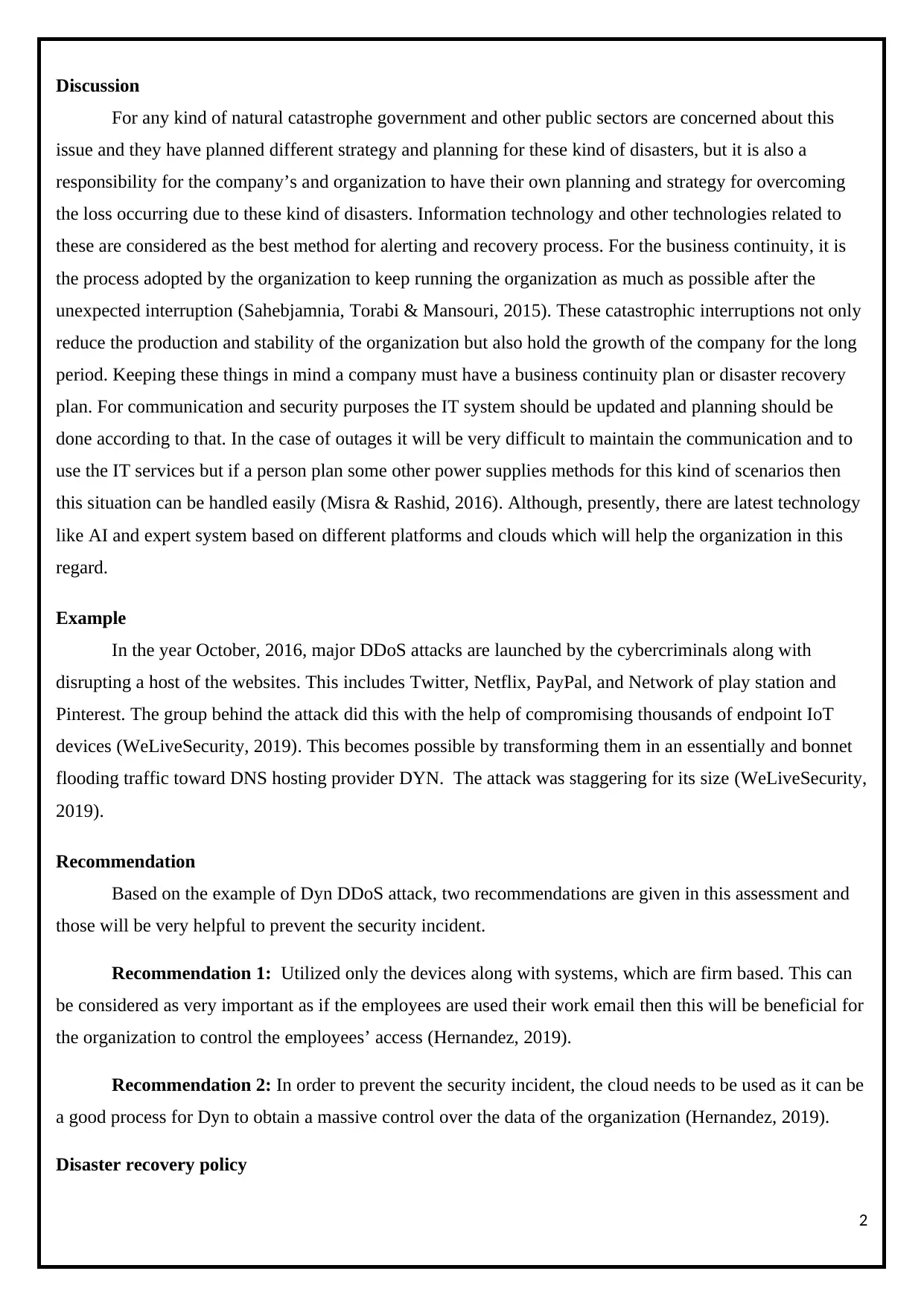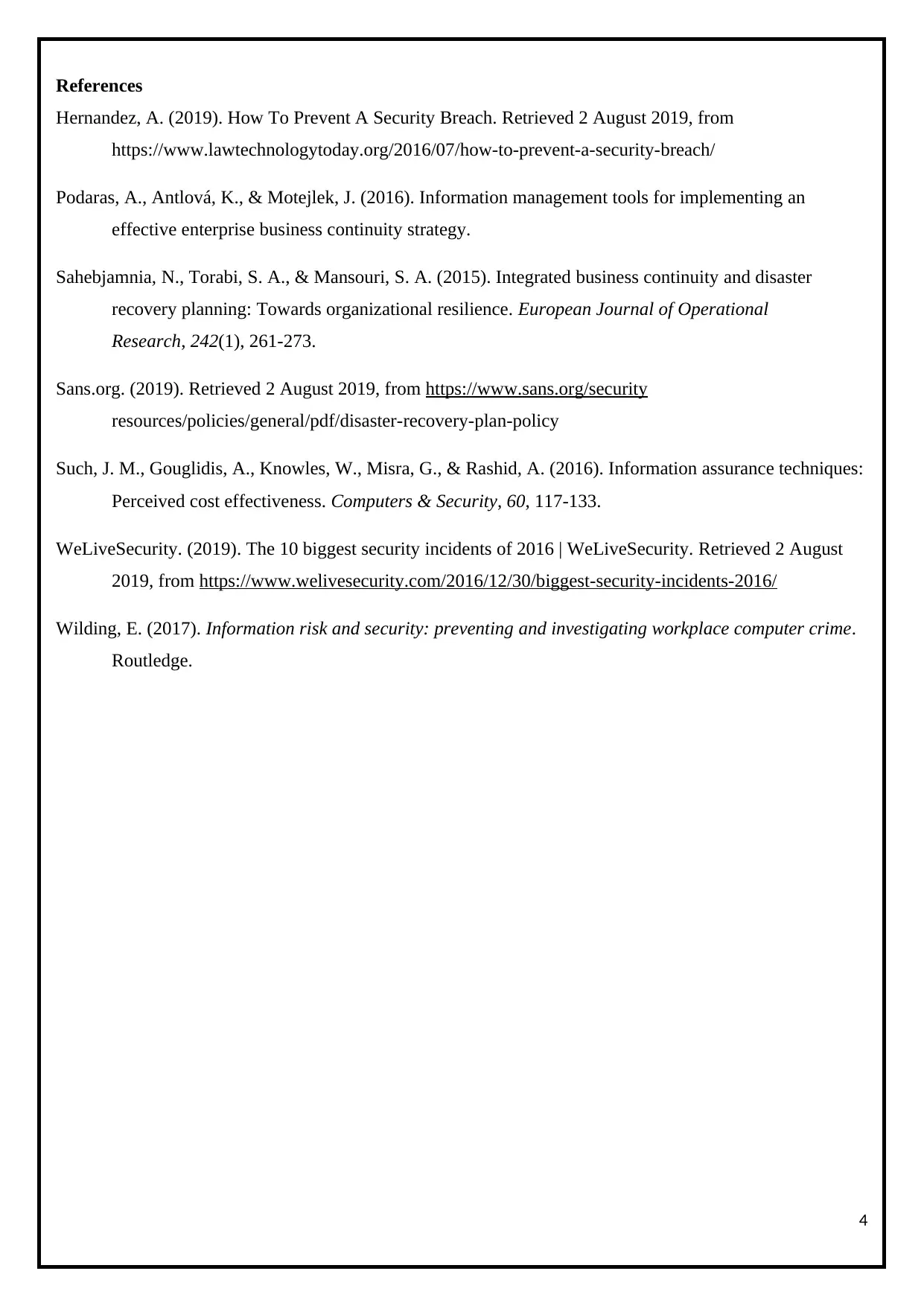Business Continuity Planning, Change Management, and Disaster Recovery
VerifiedAdded on 2022/11/15
|4
|771
|442
Discussion Board Post
AI Summary
This discussion post examines business continuity planning and disaster recovery strategies, emphasizing the importance of organizational preparedness in the face of unexpected interruptions, including natural disasters and cyberattacks. It highlights the role of IT systems, including the use of AI and cloud-based solutions, in maintaining communication and security during outages. The post provides a real-world example of a major DDoS attack on Dyn, illustrating vulnerabilities and the need for robust security measures. Based on this example, the post recommends utilizing firm-based devices and leveraging cloud services to enhance data control and prevent security incidents. Furthermore, it suggests implementing a Computer Emergency Response Plan and a Succession Plan as crucial disaster recovery policies. The post references several academic sources to support the discussed concepts, providing a comprehensive overview of business continuity and change management in the context of information assurance.
1 out of 4











![[object Object]](/_next/static/media/star-bottom.7253800d.svg)